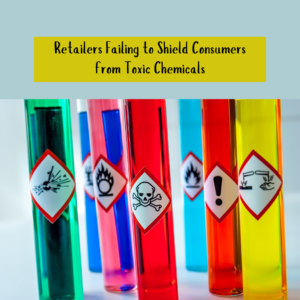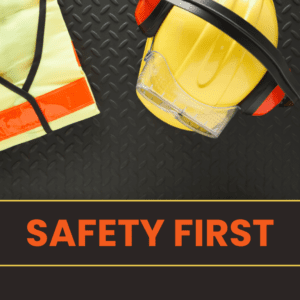Understanding Cannabis Microbial Testing Regulations

As the cannabis industry grows rapidly around the world, ensuring product safety has become a top priority. One crucial aspect of cannabis safety is microbial testing, which helps prevent contamination from bacteria, fungi, and other harmful microorganisms. These microbes can pose serious health risks to consumers, particularly those using cannabis for medicinal purposes. To mitigate these risks, governments and regulatory bodies have implemented strict guidelines for microbial testing in cannabis products. Understanding the regulatory landscape for microbial testing is essential for producers, consumers, and policymakers alike. This article explores the complexities of microbial testing in cannabis, the challenges of implementing these regulations, and the steps the industry must take to ensure compliance and safety.
The Importance of Microbial Testing in Cannabis
Cannabis plants are highly susceptible to microbial contamination at various stages of cultivation, harvesting, processing, and storage. Pathogens such as E. coli, Salmonella, molds, and yeasts can thrive in environments where moisture, organic matter, and warmth are present, all of which are common in cannabis production. If these pathogens are not detected and controlled, they can end up in the final cannabis product, whether it be flower, oil, or edibles.
For medicinal cannabis patients, particularly those with compromised immune systems, exposure to harmful microbes can result in infections or other serious health complications. For recreational users, microbial contamination can lead to adverse health effects, including respiratory issues and gastrointestinal illness. In light of these potential dangers, microbial testing is a critical step in cannabis production to ensure that products are safe for consumption.
The Regulatory Landscape for Microbial Testing in Cannabis
The cannabis industry operates under a patchwork of regulations, with standards varying significantly across countries and even within states or provinces. This variability can make it challenging for cannabis producers to navigate compliance requirements, as microbial testing regulations differ in scope, method, and acceptable limits. Below, we examine some of the key regulatory frameworks governing microbial testing in cannabis.
1. United States
In the United States, cannabis is still federally classified as a Schedule I drug, meaning that it is illegal at the federal level. However, many states have legalized cannabis for medicinal or recreational use, and each state has developed its own regulatory framework for cannabis testing.
State-by-State Regulations: Each state that has legalized cannabis has its own set of testing requirements, including microbial testing. For example, California requires testing for E. coli, Salmonella, molds, yeasts, and other pathogens. The state has set strict limits on acceptable levels of these microbes, and products that exceed these limits are not allowed to be sold.
Accredited Laboratories: In states like Colorado, Oregon, and Nevada, cannabis producers must submit their products to accredited laboratories for microbial testing. These labs must follow Good Laboratory Practices (GLP) and other standardized procedures to ensure accurate and reliable results.
Challenges: The variability in testing regulations between states creates a challenge for multi-state cannabis operators (MSOs) that have to comply with different sets of rules in each state. This can lead to increased costs and logistical difficulties in ensuring that products meet the microbial testing standards of each jurisdiction.
2. Canada
Canada legalized cannabis for recreational use in 2018 under the Cannabis Act, which established a unified regulatory framework for cannabis production, distribution, and testing across the country. Health Canada, the federal agency responsible for overseeing cannabis regulation, has implemented strict testing requirements, including microbial testing.
Mandatory Testing: Licensed producers in Canada are required to test their cannabis products for microbial contamination, including the presence of total yeast and mold, aerobic bacteria, E. coli, and Salmonella. Health Canada has established specific limits for each microbial group, and products must meet these standards before they can be sold.
Testing Laboratories: Cannabis producers in Canada must use third-party laboratories that are licensed and accredited by Health Canada. These labs are required to follow standardized testing procedures, and their results must be submitted to Health Canada for review.
Uniform Standards: Unlike the United States, where regulations vary between states, Canada’s federal framework provides consistent standards across the entire country. This uniformity simplifies compliance for producers and ensures that consumers can trust the safety of cannabis products regardless of where they are purchased.
3. European Union (EU)
The European Union’s approach to cannabis regulation is less uniform, as cannabis remains illegal in many member states. However, several countries, including Germany, Italy, and the Netherlands, have legalized medical cannabis, and the EU has developed guidelines for microbial testing of cannabis products intended for medicinal use.
Medicinal Cannabis Testing: The European Pharmacopoeia (Ph. Eur.), which sets quality standards for medicinal substances in Europe, provides guidelines for microbial testing of herbal products, including cannabis. These guidelines specify acceptable limits for bacterial and fungal contaminants in medicinal cannabis products.
Country-Specific Regulations: While the Ph. Eur. provides general guidelines, individual EU member states may have their own specific testing requirements for medicinal cannabis. For example, Germany’s Federal Institute for Drugs and Medical Devices (BfArM) has established stringent standards for microbial testing in medical cannabis products.
Harmonization Efforts: There is ongoing discussion within the EU about harmonizing cannabis regulations across member states, which could lead to more consistent standards for microbial testing in the future. However, for now, cannabis producers must navigate a complex regulatory environment that varies by country.
Best Practices for Compliance with Microbial Testing Regulations
To ensure compliance with microbial testing regulations, cannabis producers must implement best practices throughout the entire production process. From cultivation to packaging, every stage presents opportunities for contamination, and proactive measures can reduce the risk of microbial growth.
Environmental Controls
Maintaining clean and controlled environments is crucial to preventing microbial contamination. Grow rooms should have proper ventilation and humidity controls to minimize the risk of mold and bacterial growth. Regular cleaning and sanitization of equipment, surfaces, and tools can further reduce contamination risks.
Water Quality Management
Water is a significant vector for microbial contamination in cannabis production. Testing water sources for microbial pathogens, such as E. coli and Pseudomonas, and using filtration or sterilization methods like UV light treatment can help ensure water quality.
Harvesting and Post-Harvest Handling
During harvesting, trimming, drying, and curing, cannabis is especially vulnerable to microbial contamination. Workers should wear protective clothing and follow strict hygiene protocols to avoid introducing pathogens. Proper drying and curing techniques can reduce moisture levels, which in turn lowers the risk of mold growth.
Third-Party Testing
To comply with regulatory requirements, cannabis producers should work with accredited third-party laboratories that follow standardized microbial testing protocols. Regular testing of cannabis products for microbial contamination ensures compliance with regulations and helps maintain product safety.
Challenges in the Current Regulatory Landscape
While microbial testing is essential for ensuring cannabis safety, the current regulatory landscape presents several challenges for the industry:
Inconsistent Standards: As mentioned earlier, the lack of uniformity in microbial testing standards across jurisdictions makes it difficult for producers, especially those operating in multiple regions, to ensure compliance. Standardizing regulations across the industry could help simplify compliance efforts and ensure a consistent level of safety.
Testing Costs: Microbial testing can be expensive, particularly for small-scale producers. The costs associated with regular testing, along with the need for specialized equipment and laboratory services, can add financial strain to cannabis businesses.
Regulatory Changes: As the cannabis industry continues to evolve, so too do the regulations governing it. Producers must stay up to date on changes in microbial testing requirements, which can be time-consuming and complex.
Microbial testing is a critical component of cannabis safety, ensuring that products are free from harmful bacteria, fungi, and other pathogens. While the regulatory landscape for microbial testing varies across regions, it is essential for cannabis producers to understand and comply with these standards to protect consumer health and maintain the credibility of the industry. By implementing best practices and working with accredited testing laboratories, cannabis producers can navigate the challenges of the regulatory environment and ensure that their products meet the highest standards of safety and quality.











